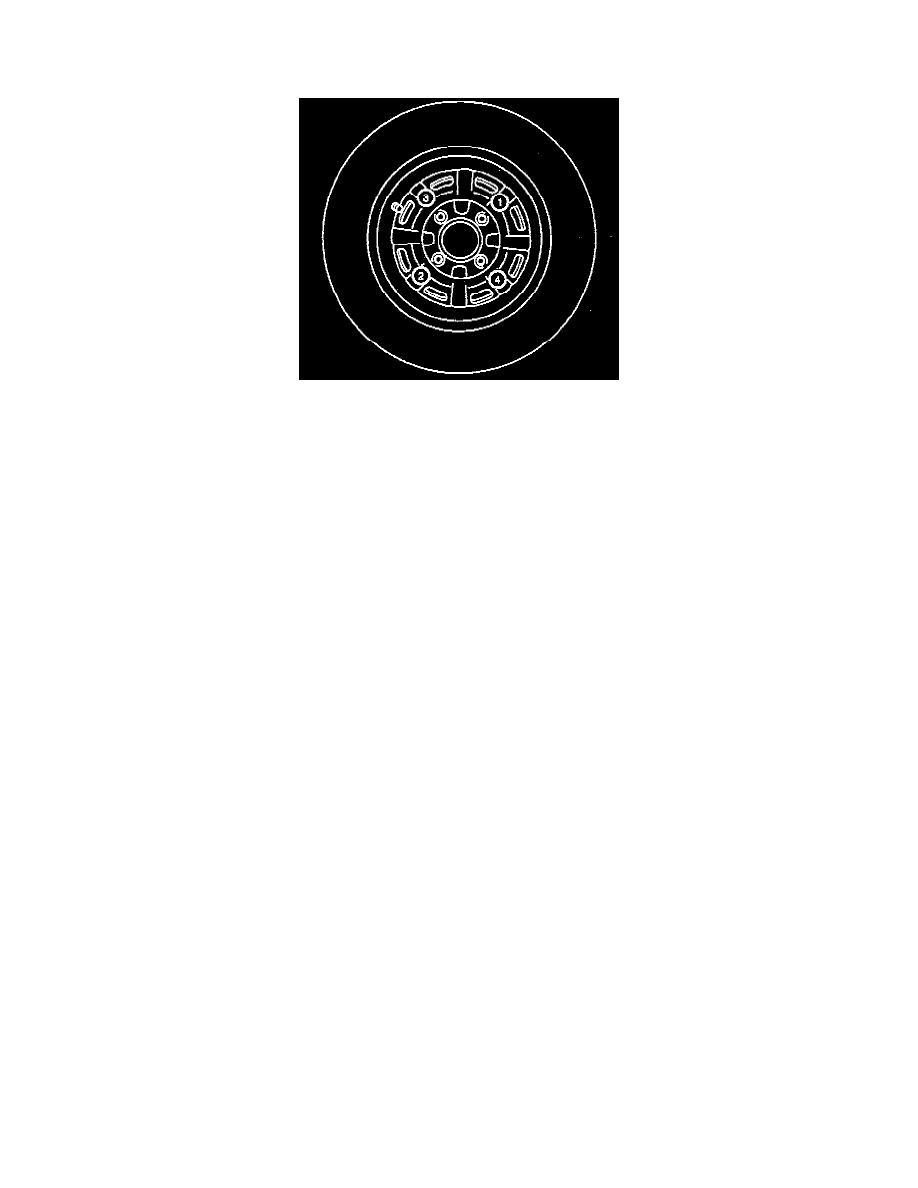Prizm L4-108 1.8L DOHC VIN 8 MFI (1998)

Wheels: Service and Repair
Tire and Wheel Removal and Installation
CAUTION: If penetrating oil gets on the vertical surfaces between the wheel and the rotor or drum it could cause the wheel to work loose as
the vehicle is driven, resulting in loss of control and an injury accident.
NOTICE: Never use heat to loosen a tight wheel. It can shorten the life of the wheel, studs, or hub and bearing assemblies. Wheel nuts must be
tightened in sequence and to the specified torque to avoid bending the wheel or rotor.
Apply penetrating oil sparingly to the hub surface, if you use oil.
Removing the wheels can be difficult, because of foreign material or a tight fit between the wheel center hole and the hub or the rotor. Excessive force
such as hammering on the wheel or the tire, can cause damage. Slightly tapping the tire side wall with a rubber mallet is acceptable. If the wheel is still
difficult to remove, use the following procedure:
1. Loosen each wheel nut 2 turns.
2. Apply quick, hard jabs to the brake pedal in order to loosen the wheel. If this does not loosen the wheel, rock the vehicle from side to side, using
the body weight of 1 or more persons.
3. Repeat this procedure if the wheel is still tight.
REMOVAL PROCEDURE
1. Raise and support the vehicle.
2. Remove the hub cap, if required.
3. Remove the wheel nuts (1,2,3,4). Mark the location of the tire and wheel assembly to the hub assembly.
4. Remove the tire and wheel assembly.
5. Clean the wheel nuts, the bolts, and the wheel and rotor mounting surfaces.
INSTALLATION PROCEDURE
NOTICE: Always use the correct fastener in the proper location. When you replace a fastener, use ONLY the exact part number for that application.
The manufacturer will call out those fasteners that require a replacement after removal. The manufacturer will also call out the fasteners that require
thread lockers or thread sealant. UNLESS OTHERWISE SPECIFIED, do not use supplemental coatings (paints, greases, or other corrosion inhibitors)
on threaded fasteners or fastener joint interfaces. Generally, such coatings adversely affect the fastener torque and joint clamping force, and may
damage the fastener. When you install fasteners, use the correct tightening sequence and specifications. Following these instructions can help you
avoid damage to parts and systems.
CAUTION: Before installing the wheels, remove any buildup of corrosion on the wheel mounting surface and brake drum or disc mounting
surface by scraping and wire brushing. Installing wheels with poor metal-to-metal contact at the mounting surfaces can cause wheel nuts to
loosen. This can cause a wheel to come off when the vehicle is moving, causing loss of control and possibly personal injury.
1. Install the tire and wheel assembly. Align the locating mark of the tire and wheel to the hub assembly.
2. Install the wheel nuts (1,2,3,4). Tighten the wheel nuts evenly and alternately in order to avoid excessive runout.
Tighten
Tighten the wheel nuts to 103 Nm (76 ft. lbs.).
3. Install the hub cap, if required.
4. Lower the vehicle.
